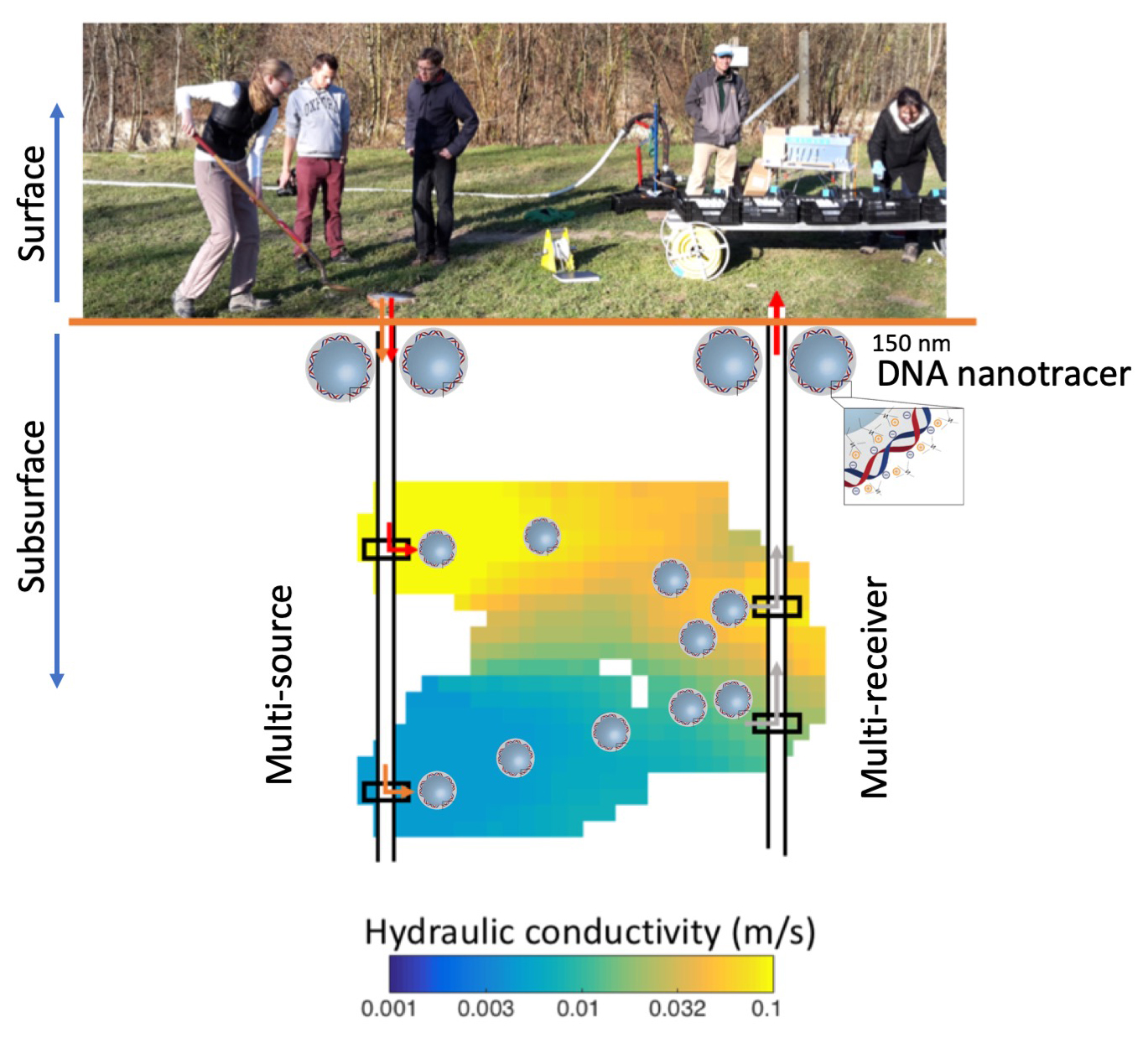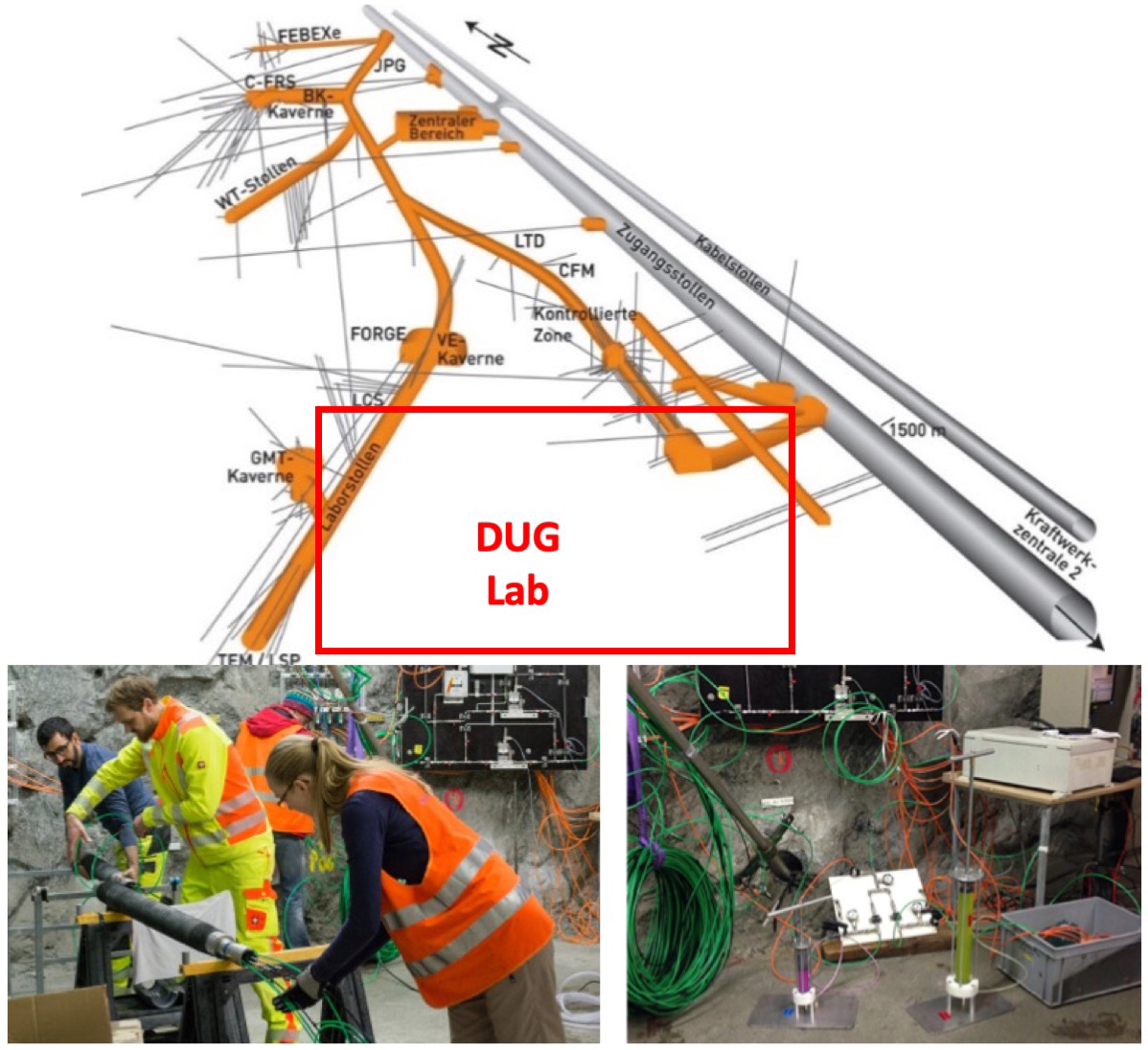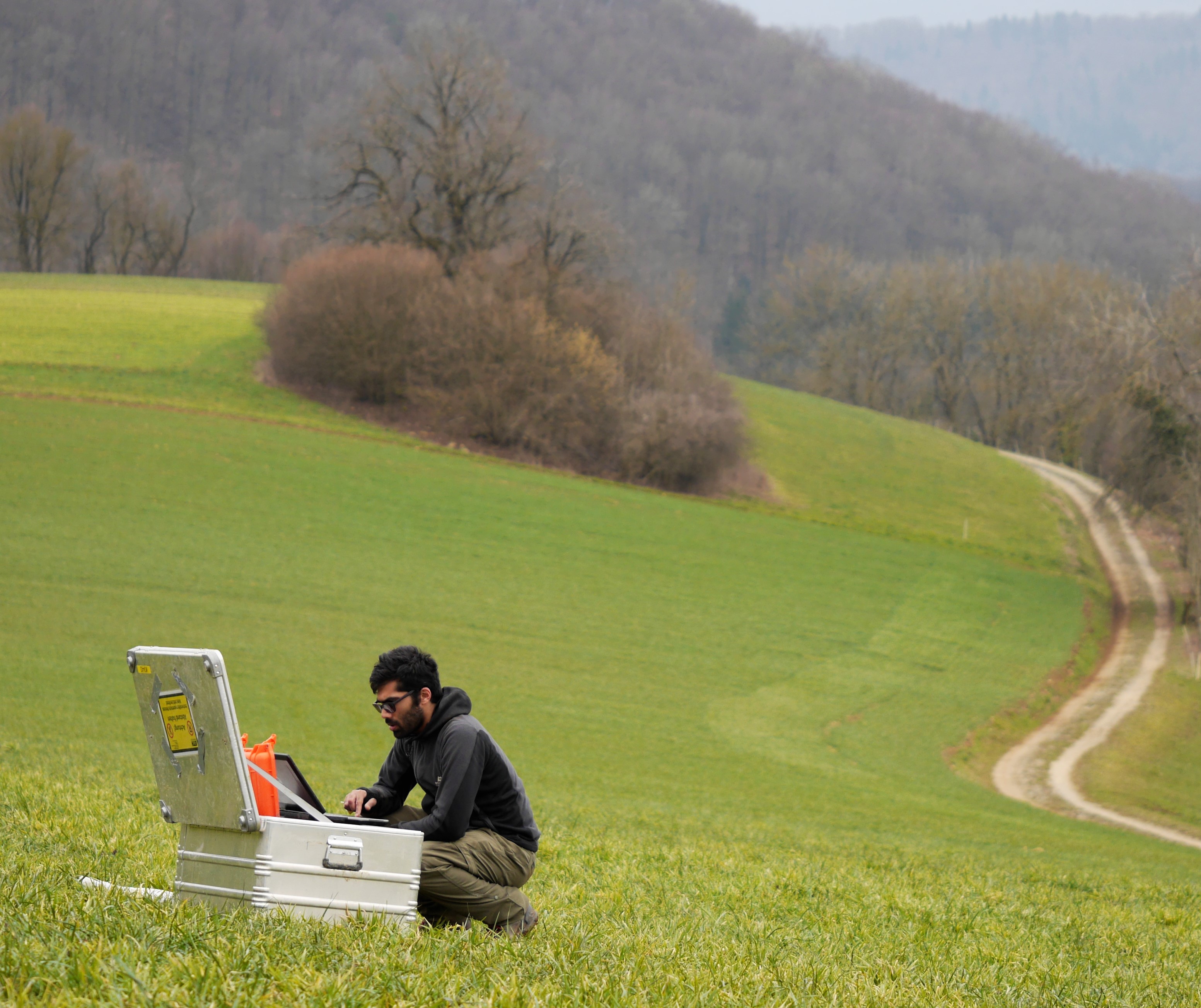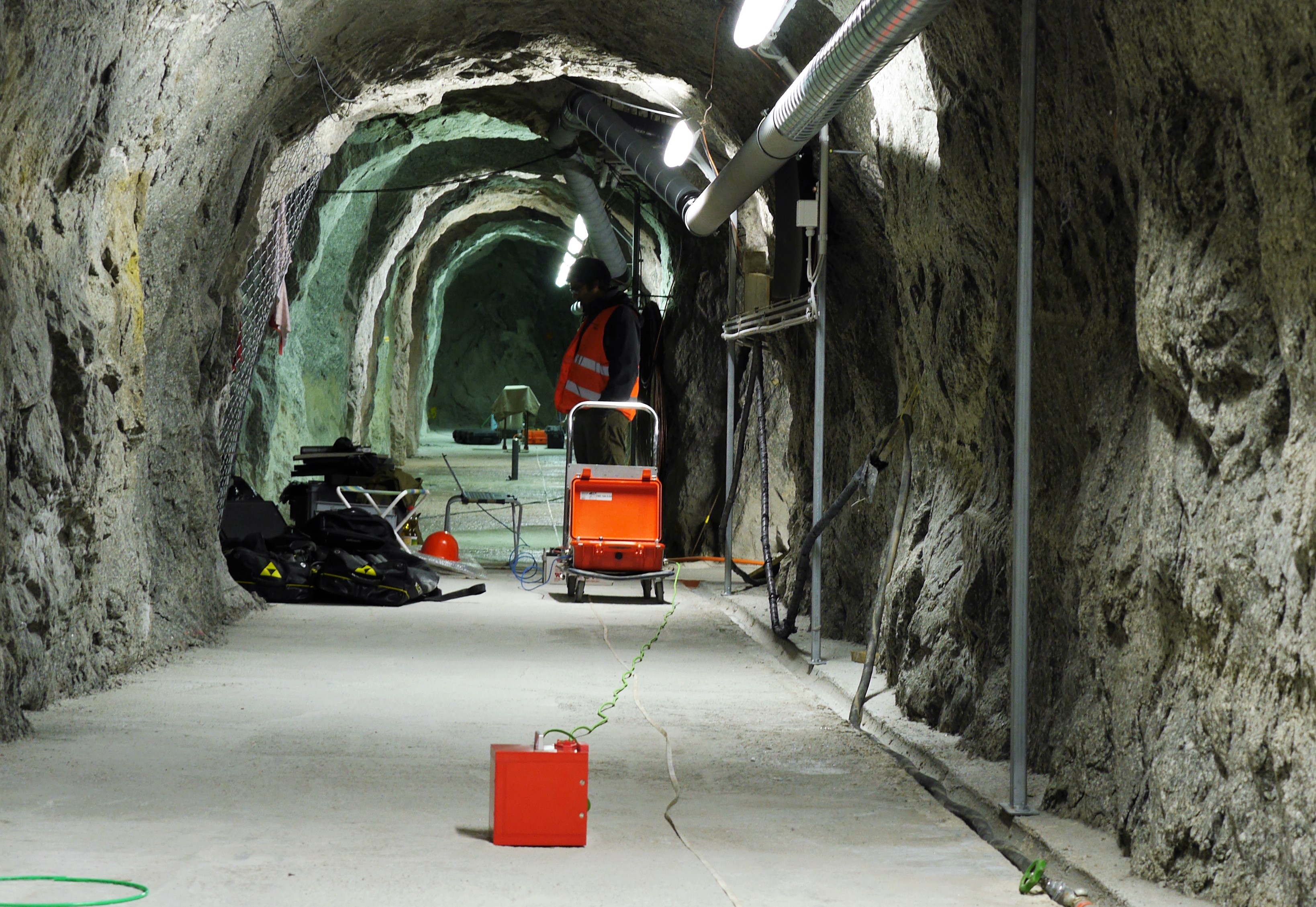METHODS & LABS
Field Investigations – Methods in the field and equipment
DNA nanotracers
With the goal of evaluating their transport properties and suitability as tracers, we have conducted column and field experiments in porous media. In column experiments we used DNA nanotracers modified in size together with a classical fluorescent solute uranine, and we could observe faster average transport velocity, lower mass recovery, and smaller swept volume as the particle size was increased. Additionally, compared to the solute, the DNA nanotracers had faster average transport velocity. These observations, also often made in literature comparing colloid and solute transport, were also made in the field experiment conducted in porous media.
In the Deep Underground Geothermal Laboratory (DUG-Lab) at Grimsel, where an in-situ stimulation and circulation experiment is taking place to improve our understanding of the processes related to permeability enhancement, a pioneering tracer experiment with the DNA nanotracers in fracture-dominated medium was conducted. In this decameter-scale field experiment we used both DNA nanotracers and fluorescent solutes, and it enables us to i) study the transport of the DNA nanotracer in fractures and ii) characterize the pre-stimulation connected pore volume. Our next tracer experiment in the DUG-Lab will include tomographic approach with the DNA nanotracers, and will aim at characterizing the post-stimulation flow path geometries and volumes.
Electromagnetic sounding methods
The electrical conductivity of rocks is closely linked to key geothermal parameters such as the hydraulic connectivity of conductive constituents like geothermal fluids, thereby making MT an important method for geothermal exploration.
Our group owns three ADU07e broad-band Metronix MT stations. This commercial system is also used by other Swiss universities, which promotes collaborations during joint projects.






